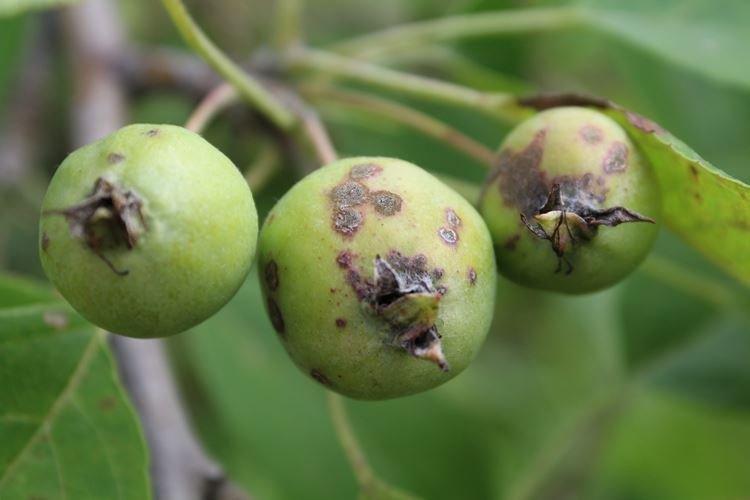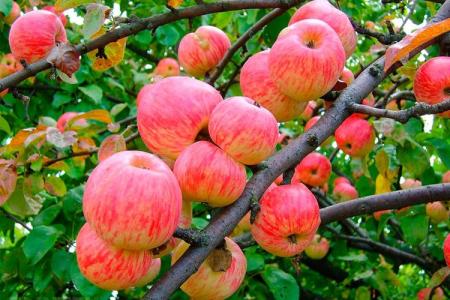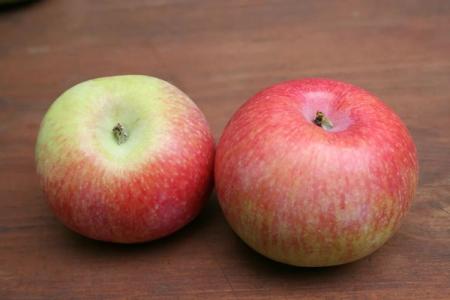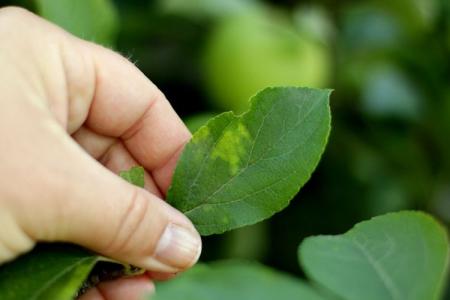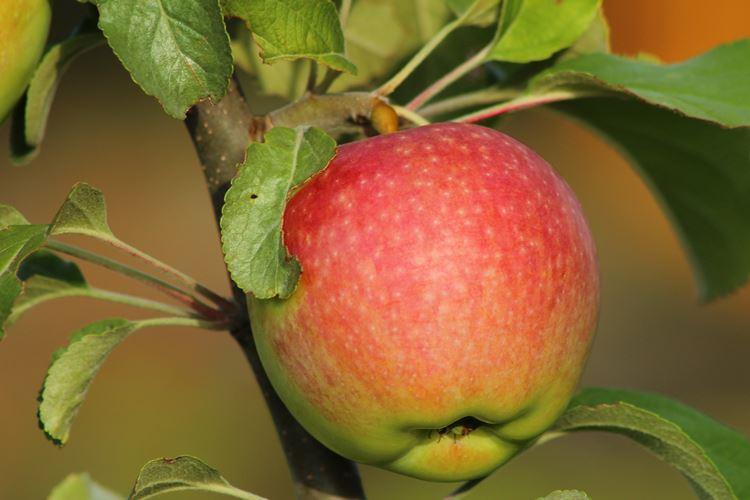
Even experienced gardeners with many years of experience agree that Medunitsa is unconditionally in the top of sweet early apple trees. The description of the fruits is hidden in their name - they really attract attention with a pronounced honey taste and aroma. These apples are nice to eat straight from the tree! In the meantime, we will tell you about the features of planting and caring for the variety!
Description and characteristics of the variety
Medunitsa is a summer domestic variety that the breeder Isaev bred back in the fifties. He combined the best features of Russian and Canadian varieties, acquired excellent immunity and resistance to frost. Although the work took about twenty years, the result was unconditionally worth each of them.
Fruits are medium, about 120-150 g, perfectly rounded. Conical apples are occasionally found - but this is the norm, not a pathology. The yellow-green skin is densely covered with red and orange stripes, which often makes the apples appear completely red.
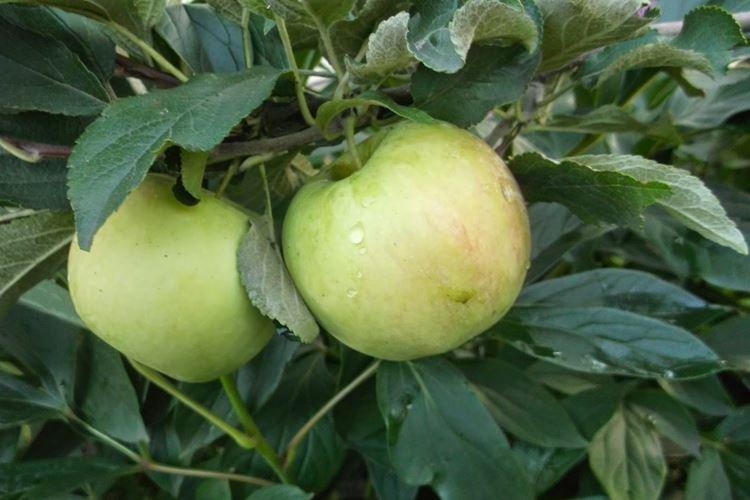
In fact, the name Medunitsa owes an unclear aroma, although this seems obvious. The variety was named after the flower of the same name, which blooms earlier than others in the spring. The lungwort is a sweet breed with minimal acidity and dense, juicy pulp.
A tall apple tree in its usual form grows up to 7 meters. By nature, its crown is pyramidal, so thanks to the formation and correct scion, it is easy to get a columnar apple tree. Rounded, but slightly elongated leaves are colored light green, sometimes with yellowness.
After 5-6 years, the tree gives a stable and strong harvest, which is harvested in mid-August. After 15 years, you will have to help with the formation of ovaries, but this way it will be able to bear fruit for over 50 years. Following the popularity of the variety, the Winter Medunitsa was bred, which bears fruit by mid-autumn, and the harvest is stored until spring.
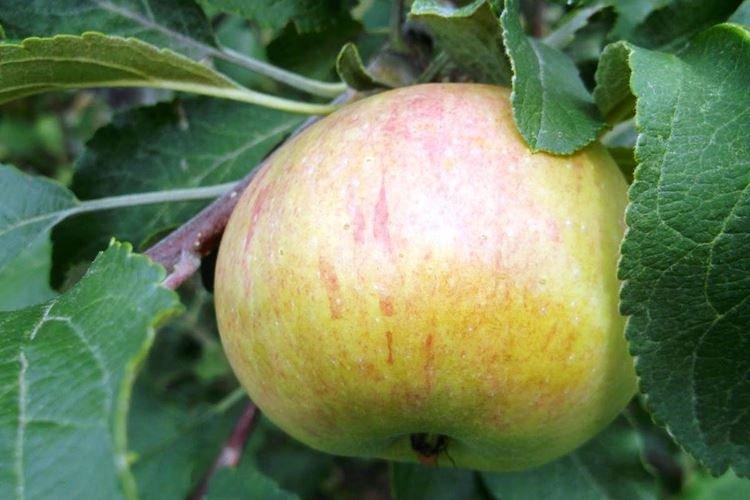
Apple tree care
Among the varieties suitable for beginners, Medunitsa has a special place. With all the high characteristics of the fruit, it is completely unpretentious and only needs regular sanitary pruning.
Lighting
The lizard loves the sun, and it is on it that apples blush better, grow larger and sweeter. Experienced gardeners even recommend pruning healthy branches if they shade the fruit.
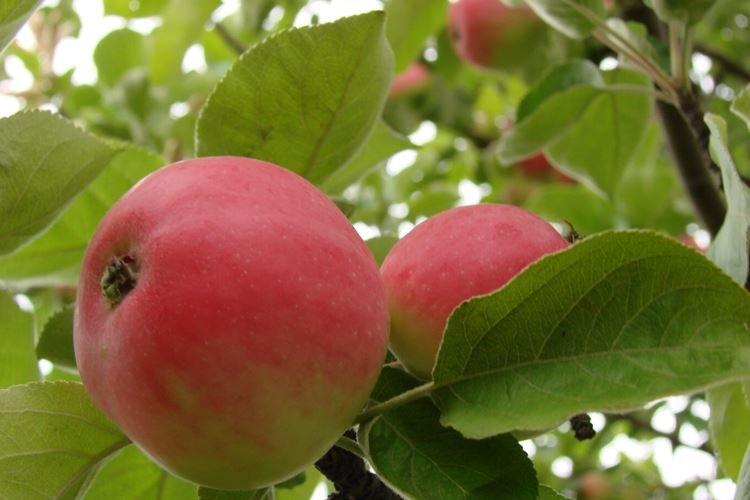
Watering
Additional regular watering is needed in the first year of life, when it is important not to allow the top layer to dry out. In the future, the young tree is watered once a week.
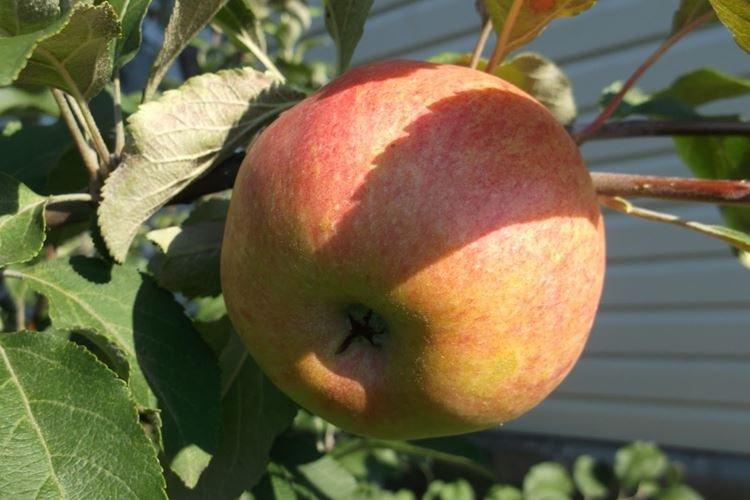
The soil
Lungwort is quite patient with short-term waterlogging, so it can grow even in areas with high groundwater. If you use a rootstock and breed dwarf trees, this effect will increase.
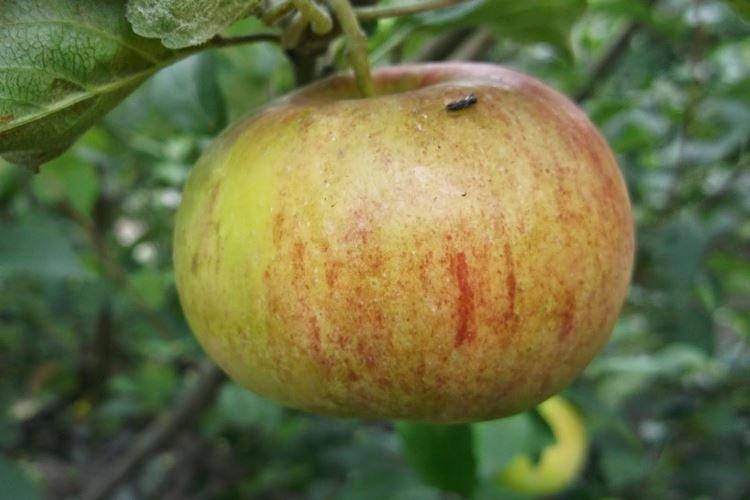
Top dressing
In spring, you need more nitrogen, which stimulates the growth of green mass and the development of the tree as a whole. In the fall, you need to strengthen the wood and prepare the Lungwort for winter, so bring potassium and phosphorus.
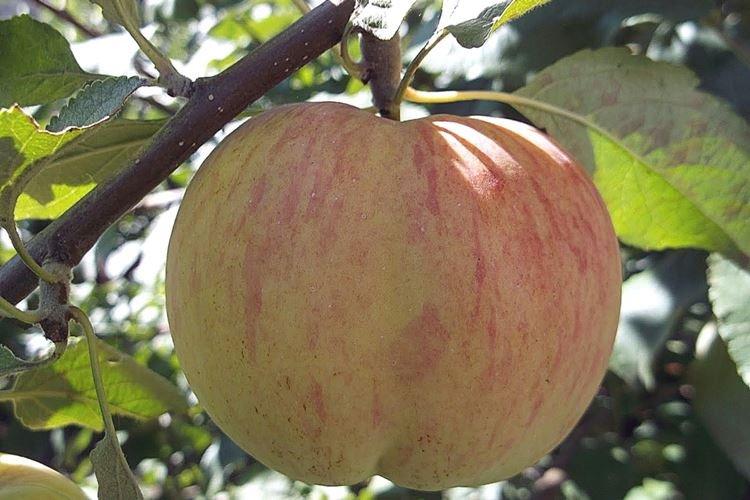
Reproduction and pollination
It is best propagated by young, strong cuttings using rooters. As for pollination, this is a self-fertile variety, but the harvest will be better if you plant different apple trees nearby. They should have the same flowering period - this is approximately the end of May.
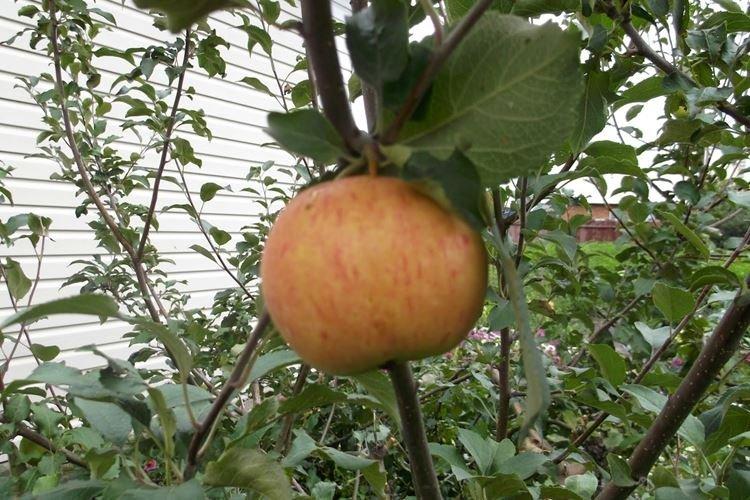
Pruning
The lungwort grows well in breadth, is densely covered with leaves, but is not prone to rapid shoots, so pruning will be specific. It should be carried out in spring and autumn, and in the summer, weak and shading branches should be removed in the background. After 2 years, form sparse tiers with a step of about 35 cm.
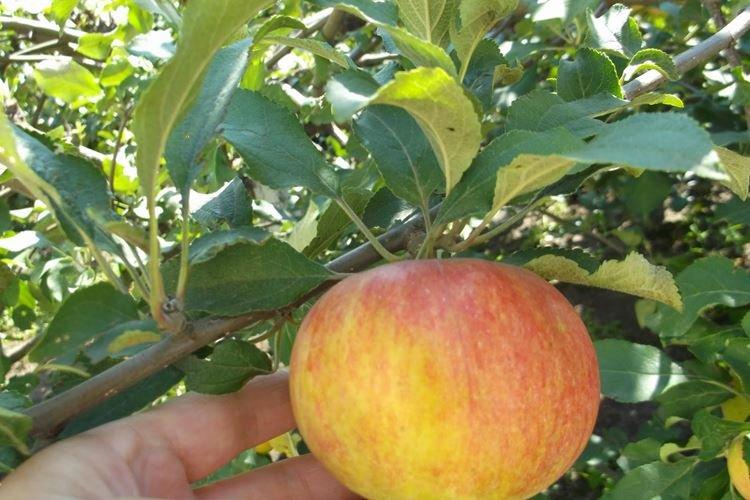
Harvesting
The fruits of Lungwort cannot be harvested at one time, because they ripen unevenly, but they do not crumble from the branches before harvesting. You need to wait until they are fully ripe - and after that the apples are stored for up to 4 months. Keep in mind that after 2 weeks they will taste slightly different.
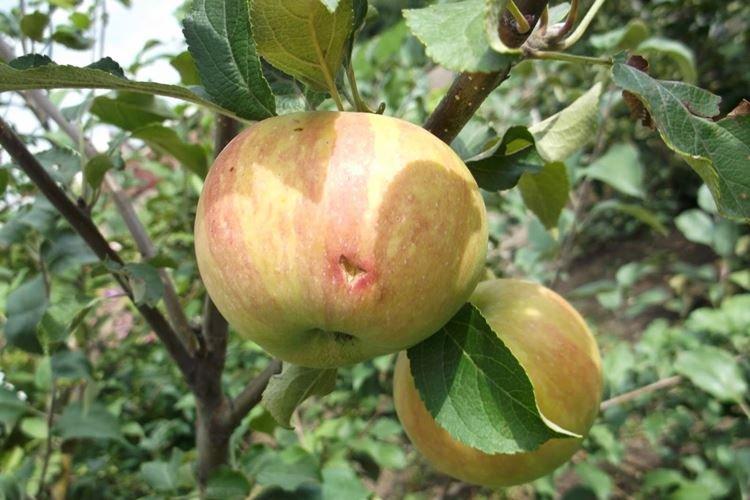
Wintering
Medunitsa was bred specifically for Russian realities, therefore it is a very winter-hardy variety. Apple trees can be safely planted even in the northern regions and preventively covered for the winter only for the first few years. They are not afraid of sharp spring frosts and are successfully cultivated even in Siberia.
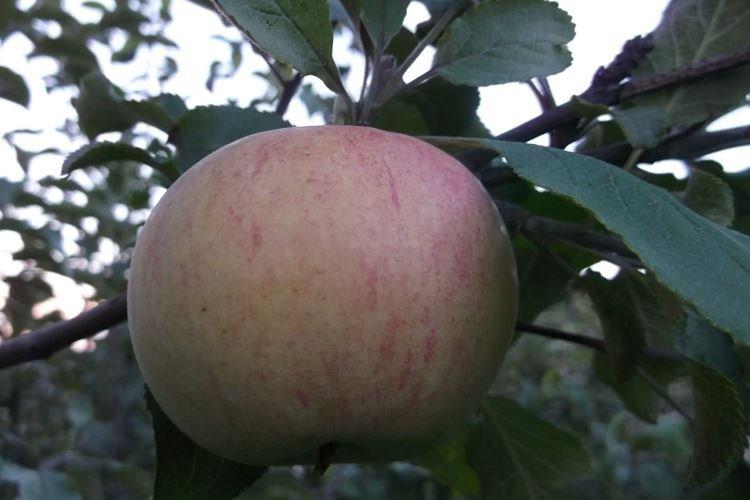
Planting the apple tree Medunitsa
It is recommended to plant Medunitsa by the end of March, when it is already warm enough outside. The seedlings should be young, but with closed buds. At first, they need abundant watering so that the roots do not dry out until adaptation is over.
If you plant Medunitsa in the fall, you definitely need to spud the young tree, and in the winter - cover it with snow or agrotex. In the summer, you can plant container seedlings, but prepare the soil in advance, apply fertilizers, get rid of weeds, caterpillars and aphids.
The recommended distance between seedlings is from 3 m, although dwarf and columnar trees can be slightly compacted. But remember that the tighter the planting, the more fertilizer it requires. The rest of the planting process of Medunitsa is similar to any other classic varieties.
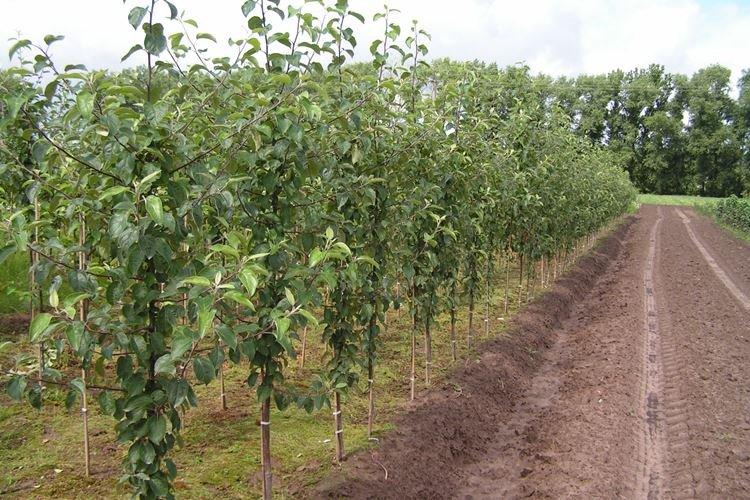
Diseases and pests of Medunitsa
The lungwort is one of the most scab resistant species, and it is this eternal scourge of fruit trees. And the thing is that in the years of work on the variety, the problem was especially acute. So resistance to infection was originally one of the main characteristics that biologists wanted to obtain.
But keep in mind that with each season new strains appear, so do not refuse preventive treatment. Copper-based universal preparations are best suited, which at the same time prevent pest infestations.
